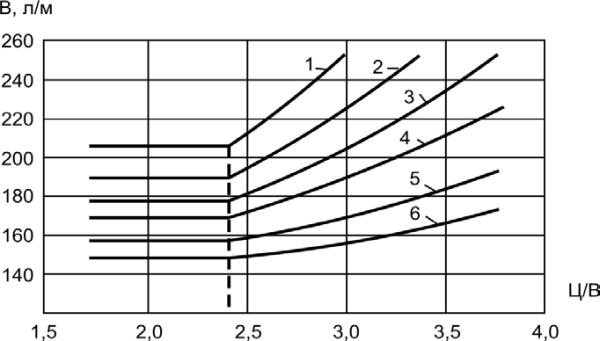,
(2.5
)
n c
.
m s
.
m st
.
pores
fm
where W – the water quantity which determined to the necessary workability of
mixture, kg/m3; C, S and St – accordingly quantities of cement, sand and
coarse aggregate, kg/m3; Kn.с, Km.s, Km.st – normal consistency of cement paste
and coefficients of moistening of fine and coarse aggregates; Х = (V/C)p/Kn.d –
relative index of moistening of cement paste in the concrete mixture ((V/C)p –
water-cement ratio of cement paste); Vpores – the water taken in by the pores of
aggregates, kg/m3; Vfm – water which physically and mechanically retained in
pores space between the particles of aggregates (free water), kg/m3.
Approximately simultaneously (at the beginning of 30th of 20
century) and independently from each other V.I. Soroker (Russia)
and F. McMillan (USA) had set the rule of constancy of water
quantity (RCW). It was found that at unchanging water quantity
the change of cement quantity within the limits of 200-400 kg/m3
does not influence substantially on workability of concrete
mixtures.
47






W, kg/m3
C/W
Fig. 2.7. Influence of cement-water ratio (C/W) on water
quantity
1.3 – slump of concrete mixtures: 10, 5, 2 sm.
4.6 –workability (Vebe): 30, 60, 100 sec
The top limit (W/C) of the rule of constancy of water
cr
quantity(RCW) can be calculated by formula:
where Km.s, Km.st –
coefficients of moistening of
+
fine and coarse aggregates;
(W / C) =
+
cr
( 35
,
1
... ,
1 65)
К S К
St
К
m s
.
m st
.
(2.6)









